Vertebrae
Distinguish between cervical
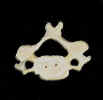 , thoracic
, thoracic  , lumbar
, lumbar 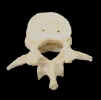 and
sacral vertebra
and
sacral vertebra 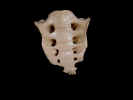
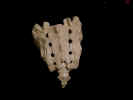 , identify an
atlas
, identify an
atlas 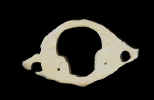 and an axis
and an axis 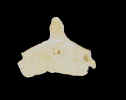
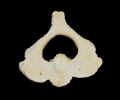 . On each vertebra identify the following bony landmarks:
body
. On each vertebra identify the following bony landmarks:
body 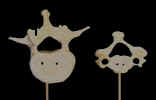 ,
transverse process
,
transverse process 
 , spinous process
, spinous process 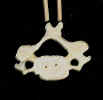

 , articular processes
, articular processes 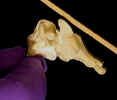

 ,
articular facets
,
articular facets 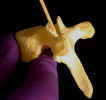 and
vertebral foramen
and
vertebral foramen  . Find the odontoid process (dens)
. Find the odontoid process (dens) 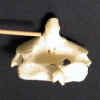
 on the axis and the
transverse costal facets
on the axis and the
transverse costal facets  and costal demifacets
and costal demifacets 
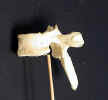 on a thoracic vertebra and the
transverse foramen
on a thoracic vertebra and the
transverse foramen 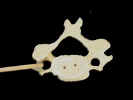 on a cervical vertebra. On the vertebral column identify the
intervertebral foramina
on a cervical vertebra. On the vertebral column identify the
intervertebral foramina  and the sacral foramina
and the sacral foramina 
 . Identify
the cervical, thoracic, lumbar and sacral curvatures.
. Identify
the cervical, thoracic, lumbar and sacral curvatures.Ribs
Identify head

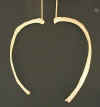 , neck
, neck 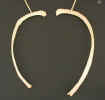 , tubercle
, tubercle  , angle,
subcostal groove
, angle,
subcostal groove 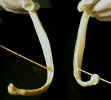 , and body
, and body 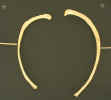 . On the
articulated skeleton identify the true, false and floating ribs.
. On the
articulated skeleton identify the true, false and floating ribs.Sternum
Identify the segments called sternebrae. The wide superior segment is the manubrium
 .
The body (gladiolus)
.
The body (gladiolus)  is made up of four central sternebrae. The joint between
the manubrium and the gladiolus is the sternal angle (angle of Louis)
is made up of four central sternebrae. The joint between
the manubrium and the gladiolus is the sternal angle (angle of Louis)  .
The inferior most sternebra is the
xiphoid process
.
The inferior most sternebra is the
xiphoid process  .
.Scapula
Identify the spine
 , acromion
, acromion 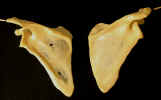 , metacromion (cat only)
, metacromion (cat only)  ,
supraspinous fossa
,
supraspinous fossa 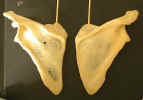 ,
infraspinous fossa
,
infraspinous fossa  , subscapular fossa
, subscapular fossa  , glenoid cavity
, glenoid cavity  , coracoid process
, coracoid process  ,
suprascapular notch
,
suprascapular notch  , superior angle
, superior angle 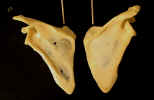 , inferior angle
, inferior angle
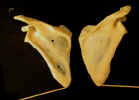 , supraglenoid tubercle
, supraglenoid tubercle

 ,
infraglenoid tubercle
,
infraglenoid tubercle
 , and vertebral border (medial border)
, and vertebral border (medial border) 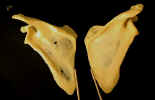 .
.Clavicle
Identify the acromion end (distal end)
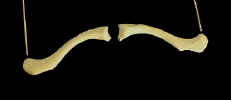 and the sternal end
(proximal end)
and the sternal end
(proximal end) 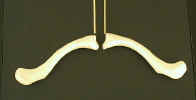 .
.Skull
On the occipital bone locate the occipital condyles

 , nuchal lines
, nuchal lines


 and the
external occipital
protuberance
and the
external occipital
protuberance 
 . Identify the mastoid process
. Identify the mastoid process 
 of the temporal bone.
of the temporal bone.Identify the above on the articulated cat skeleton.